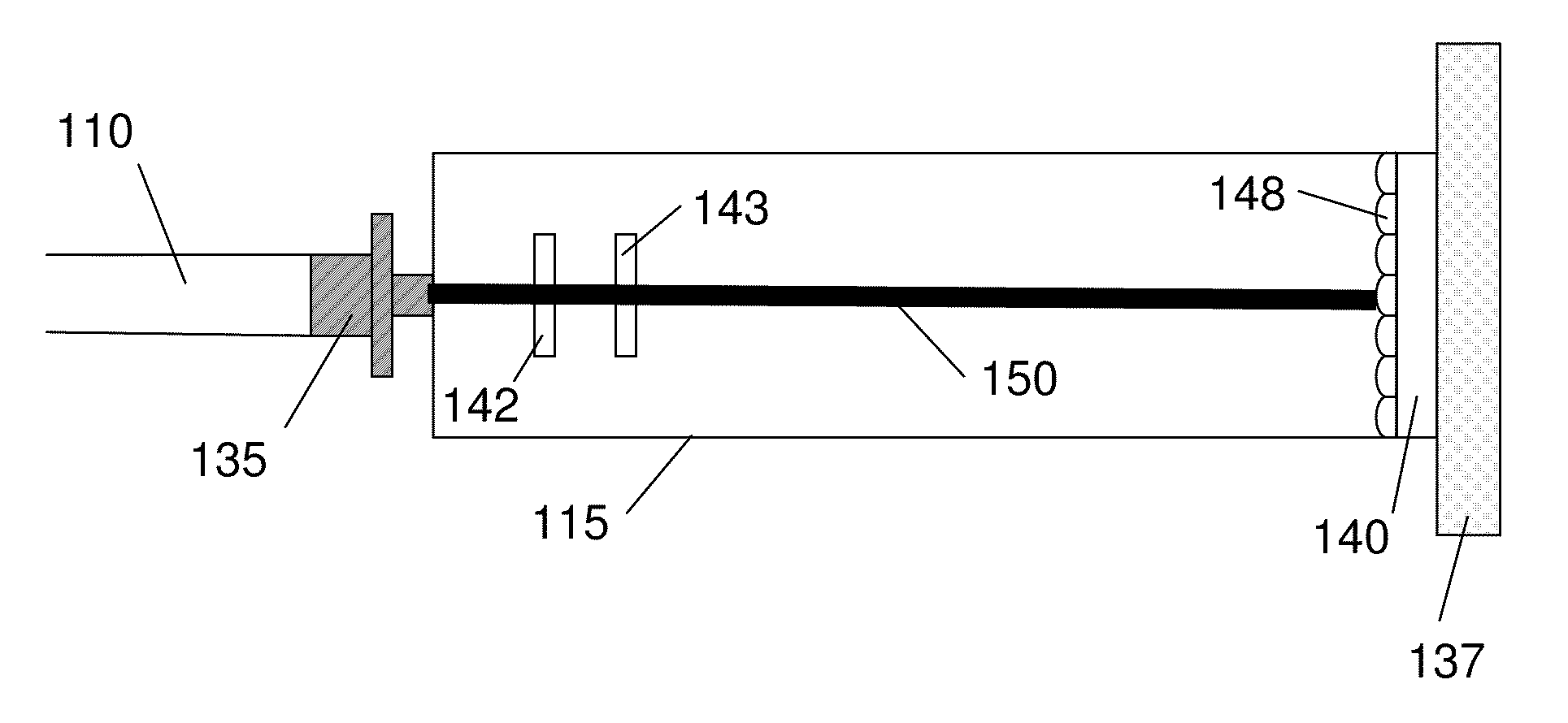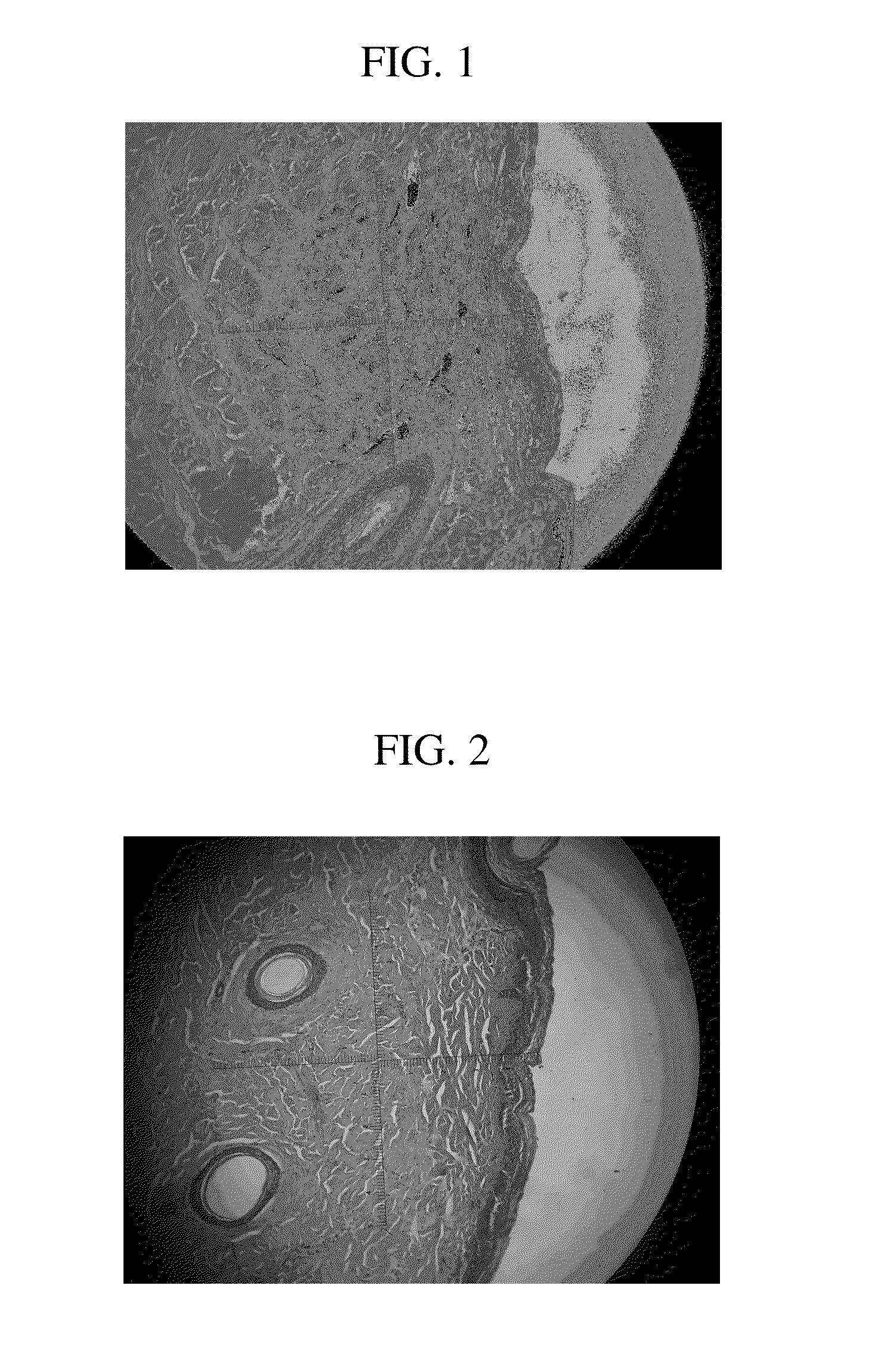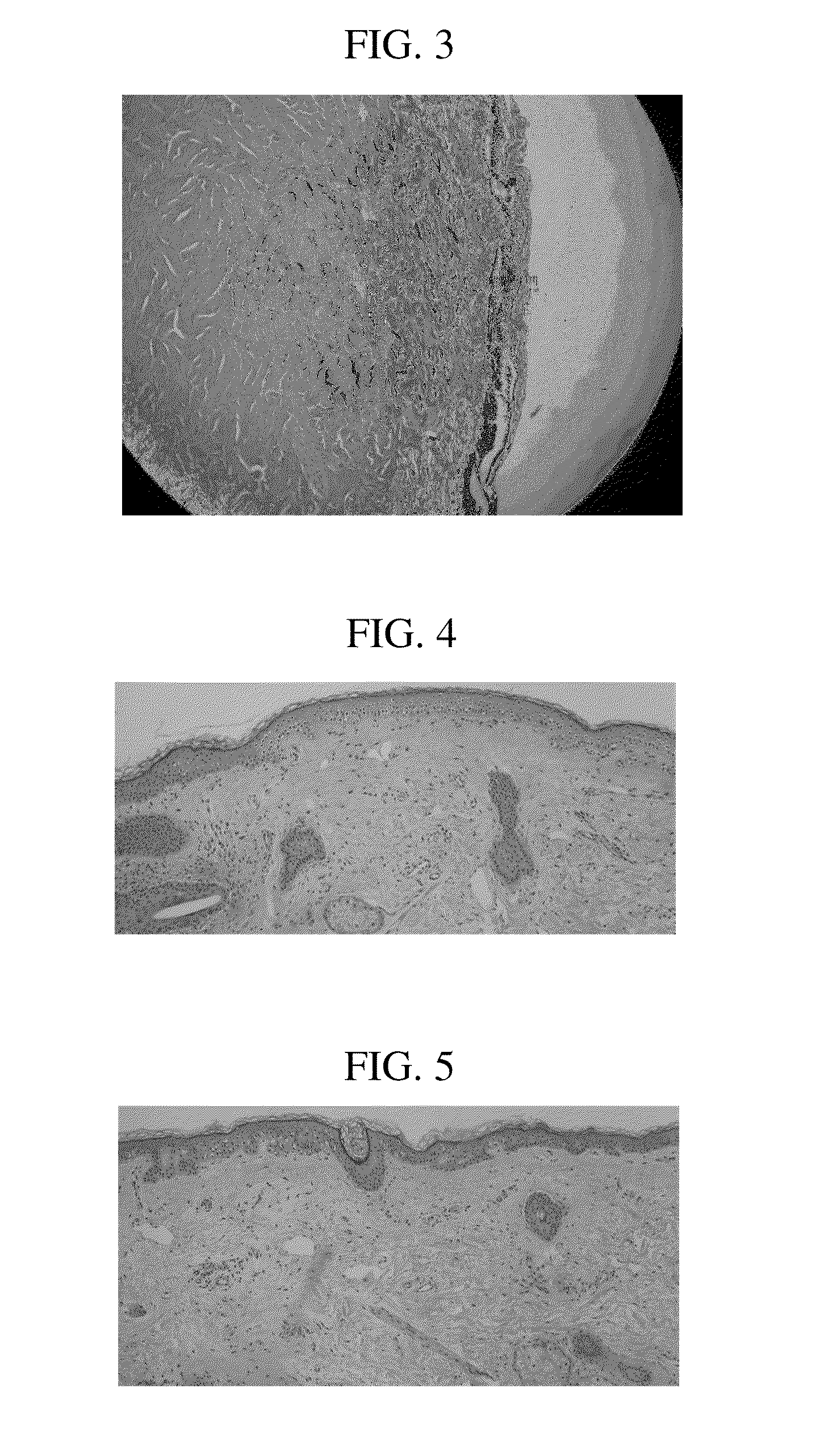Skin resurfacing at 1930 nm
a skin resurfacing and 1930 nm technology, applied in the field of skin resurfacing, can solve the problems of skin damage, partial thickness of epidermis and upper portion of dermis damage, and damage to epidermis and upper portion of dermis, so as to speed up healing time, less downtime, and unwanted ablation of skin
- Summary
- Abstract
- Description
- Claims
- Application Information
AI Technical Summary
Benefits of technology
Problems solved by technology
Method used
Image
Examples
Embodiment Construction
[0041]Table 1 shows optical penetration depths for wavelengths commonly used for skin resurfacing (ablative and non-ablative) and for the 1930 nm wavelength.
[0042]A treatment can damage the epidermis, which can be about 100 μm±50 μm. The 1930 nm wavelength is advantageous because its optical penetration depth substantially matches the thickness of the epidermis. The treatment can extend into the dermis up to 180 μm, although deeper treatments can be achieved. In certain embodiments, the treatment extends into the dermis by up to 150 μm, up to 100 μm, up to 50 μm, up to 25 μm, up to 10 μm, up to 5 μm, or up to 2 μm.
[0043]
TABLE 1Optical penetration depths.λ (nm)μa (cm−1)OPD (μm)10640845122940122020.8279058821.7193013077155011909145031323
[0044]Tissue experiments were performed on a porcine model. A 16 W 1930±40 nm diode laser system (available from Applied Optronics) delivered energy via a 1.5 mm optical fiber. The pulse duration was up to 1 second. The light was reimaged through an op...
PUM
 Login to View More
Login to View More Abstract
Description
Claims
Application Information
 Login to View More
Login to View More - R&D
- Intellectual Property
- Life Sciences
- Materials
- Tech Scout
- Unparalleled Data Quality
- Higher Quality Content
- 60% Fewer Hallucinations
Browse by: Latest US Patents, China's latest patents, Technical Efficacy Thesaurus, Application Domain, Technology Topic, Popular Technical Reports.
© 2025 PatSnap. All rights reserved.Legal|Privacy policy|Modern Slavery Act Transparency Statement|Sitemap|About US| Contact US: help@patsnap.com



